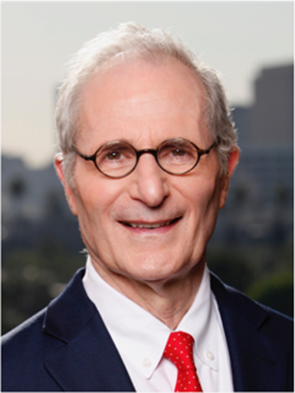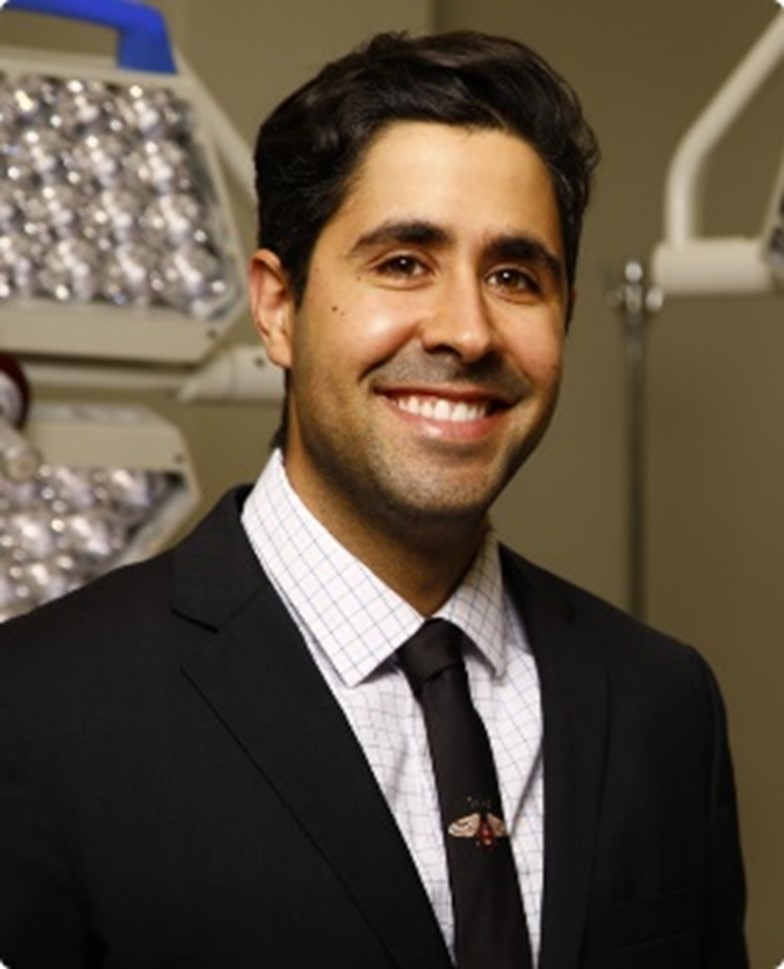Interviews with Dr. John Reinisch of Reinisch Plastic Surgery and Dr. Youssef Tahiri of Tahiri Plastic Surgery in Beverly Hills, California
With the recent clearance in the US to lower the age of the Cochlear™ Osia® System to 5 years old for children with conductive hearing loss, mixed hearing loss and single-sided sensorineural deafness (SSD), children now have full access to the Osia System’s unique technology that is optimized to deliver high power and clarity, especially in high-frequencies.
This lowered age indication helps support earlier hearing loss treatment for pediatric patients with microtia/atresia, who may also choose to pursue reconstructive ear surgery. We asked renowned surgeons Dr. John Reinisch and Dr. Youseff Tahiri to share how they approach placing the Osia System simultaneously with MEDPOR® reconstruction for their pediatric patients.*
Please note: The views of the interviewees in this forum are their own and do not necessarily represent the views of Cochlear Limited or its subsidiaries. The content of this guideline is intended as a guide for information purposes only and does not replace or remove clinical judgment or the professional care and duty necessary for each specific recipient case. Clinical care carried out in accordance with this guideline should be provided within the context of locally available resources, expertise, and standards of care and practice. Cochlear does not condone any off-label use of its products, and it is not Cochlear’s intent to promote off-label use by providing this blog as a resource to clinicians.

Dr. John Reinisch is a Harvard-trained pediatric plastic and reconstructive surgeon specializing in ear reconstruction for children with microtia. Demonstrating extensive experience, Dr. Reinisch has performed over 2,500 implant ear reconstructions, with the average age of the patient at reconstruction being 4.5 years.

Dr. Youssef Tahiri is a board-certified pediatric plastic and craniofacial surgeon specializing in Microtia reconstruction. He graduated from McGill Medical School and completed his residency in Plastic and Reconstructive Surgery at McGill University, followed by a fellowship at the Children’s Hospital of Philadelphia and the University of Pennsylvania. Currently practicing in Beverly Hills, Dr. Tahiri is recognized as a world expert for his innovative techniques in microtia and atresia treatment and has contributed significantly to research in the field. He has performed approximately 94 Osia surgeries, with an average patient age of 6 years old.
Describe your typical pediatric Osia® System candidate. What makes them a candidate and why do you offer the Osia System?
Dr. Reinisch: Most children with microtia have an associated conductive hearing loss, so they are candidates for the Osia. We offer the Osia because it has the highest quality of sound for the conductive hearing devices, does not have feedback when touched, attaches via a magnet, and can be waterproofed†. Waterproofing is a huge upgrade for children with bilateral hearing loss, as they are extremely hard of hearing when un-aided.
Dr. Tahiri: Our typical pediatric Osia candidate is a child with unilateral microtia and atresia, who typically presents with moderate to severe conductive hearing loss as shown on audiograms. These children have usually used a Baha® System on a softband previously and are now prepared for ear reconstruction.
I prefer to implant the Osia simultaneously with the ear reconstruction. Combining both procedures into one surgery not only streamlines the process but also prevents the need for an additional scalp incision, required if the Osia were placed in a separate procedure.
What percentage of your cases is simultaneous reconstruction with the placement of the Osia System?
Dr. Reinisch: Nearly all. We often swap out previous Baha Connect or Baha Attract Systems when doing revisions on previous patients. We place Osia in approximately 30% of our ear reconstruction patients.
Dr. Tahiri: Of the 94 patients on whom I implanted Osia, 93 were done simultaneously with the ear reconstruction.
How are patients and their caregivers involved in the decision making? Is age a factor in how you approach involving younger patients in the decision?
Dr. Reinisch: In very young patients, we consider the thickness of the scalp. If the children have a very thin scalp, we consider a thin layer of Alloderm or fascia to prevent damage to the scalp. We are also careful to use the lowest strength magnet in the sound processor and often augment with the [Cochlear™ SoftWear™] pad.
Dr. Tahiri: I generally find it appropriate to implant an Osia as early as possible, provided the patient weighs at least 15 kg. At this point, the skull is typically thick enough to accommodate an osseointegrated screw.
For younger patients, there are two main concerns:
- Skull Thickness: If the patient is at least 15 kg, I have observed that the skull is usually sufficiently thick for the implant.
- Scalp Thickness: The Osia features a magnet, and constant pressure could potentially lead to scalp wound issues. To mitigate this risk, I always place the Osia in the subperiosteal layer, ensuring adequate coverage for the implant and reducing the likelihood of wound complications in the future.
I review the conductive hearing loss with the parents (and patients over 18), and we discuss their experience with the Baha softband, including their preferences. I explain the differences between the Baha softband and the implanted Osia, and I show them a sample of the Osia that I keep in the office. We also cover the risks, benefits, and alternatives of the Osia, as well as the advantages of combining its implantation with ear reconstruction. Additionally, I emphasize the importance of early hearing for developmental progress.
When would you consider a simultaneous reconstruction? When would you stage the procedures? What are the decision factors (one or two stage)?
Dr. Reinisch: We perform ear reconstructions as a single stage. We recommend the Osia as a combined procedure for all of our patients, unless they are candidates for and prefer canalplasty. We only place the Osia at a different time than an ear reconstruction if the parents or the patient initially refused a hearing device at the time of ear reconstruction and changed their mind when the hearing loss became more apparent (went to college, etc.).
Dr. Tahiri: I always recommend implanting the Osia simultaneously with ear reconstruction. However, there are a few scenarios where this may not be possible:
- For American Patients: If the insurance does not cover the Osia and I am out-of-network, the insurance may approve the ear reconstruction with me but require the Osia to be implanted at an in-network facility.
- For International Patients: If they cannot afford both the ear reconstruction and Osia at the same time, they may receive the ear reconstruction from me and then travel to their home country for the Osia implantation.
- Rare Cases: For very young children, if the skull thickness is insufficient to support a [BI300] implant, I may need to postpone the Osia implantation. This has happened on one occasion and led to the cancellation of the Osia procedure.
Are there any tips or considerations you would share with audiologists who are considering recommending the Osia System for their pediatric patients?
Dr. Reinisch: I recommend audiologists instruct patients to build up to full-time use of the device, often utilizing the weakest magnet that will stay on and increasing magnet strength over time with tolerance. This is particularly helpful in young children with thin scalps. Additionally, the Softwear pad can be utilized to make a too strong magnet slightly weaker without having to go down a magnet strength.
Dr. Tahiri: Given the safety of Osia implantation, I would recommend that audiologists suggest performing the Osia placement simultaneously with ear reconstruction for patients with microtia, atresia, and conductive hearing loss. Combining the procedures into one surgery rather than two helps avoid a second anesthesia, an additional scalp scar and allows for earlier hearing restoration. Additionally, I advise audiologists to refer their patients to doctors who have extensive experience with both simultaneous microtia reconstruction and Osia implantation.
When you counsel families after the procedure(s) – what key aspects do you want families to be aware of? What do families typically ask about?
Dr. Reinisch: Families often ask about future MRIs and TSA screenings. We provide the MRI** information from Cochlear and provide the patients with a device card, although none of our patients have ever mentioned being questioned by TSA over the device system. Families also ask about the noticeability of the device when worn – we point out that it’s like glasses, you only wear it when you need to and can remove it if you’d like, particularly for unilateral patients.
Dr. Tahiri: When counseling families ahead of the procedure, I focus on the following key aspects:
- Early Hearing Restoration: The benefits of restoring hearing at a young age, which supports developmental progress.
- Advantages of the Osia System: How the Osia system compares to other systems, including the Baha.
- Surgical Risks: The potential risks associated with the surgery.
- MRI Compatibility: The fact that the Osia system is MRI-compatible.**
When counseling families after the procedure, I focus on:
- Device Warranty: Assisting them in registering their device for warranty, as families frequently have questions about this.
- Support Resources: Providing information on how to access support when they return to their home country or state.
- Scalp Care: Emphasizing the need to monitor the scalp for any irritation from the magnet to prevent potential damage.
How do you pre-plan for the surgery? How does the placement of the Osia Implant differ from a non-reconstruction candidate?
Dr. Reinisch: We only place the Osia in patients with microtia who are having or have had an ear reconstruction (since we’re plastics, not ENT – we don’t see patients with isolated hearing loss). The patients get a CT scan to ensure there is no cholesteatoma prior to the ear reconstruction and they have an audiogram.
Dr. Tahiri: The pre-op planning for the surgery is relatively straightforward. We typically request an audiogram to document the conductive hearing loss. The placement of the Osia is similar whether it is done concurrently with ear reconstruction or as a separate procedure. The implant is implanted posterior and superior to the ear.
What key surgical considerations or modifications do you make for your patients who require a simultaneous (or staged) reconstruction? In your opinion, what surgical considerations contribute to the best possible outcomes in this patient population?
Dr. Reinisch: As mentioned, we only place the Osia separately from the ear reconstruction if they initially refused the device then change their mind. In these patients, we use a curved incision to avoid a clear part in the hair once it scars. We are also mindful to place it far enough from the ear reconstruction, so the device does not touch the ear, and slightly above, so the ear does not shadow the sound.
Dr. Tahiri: Again, the placement of the Osia is similar whether it is done concurrently with ear reconstruction or as a separate procedure.
To achieve the best outcomes when placing an Osia, I focus on the following factors:
- Technique and Placement: Ensure precise placement of the Osia implant to optimize osseointegration and hearing outcomes. I try to use to find an area of the skull that is thick (usually looks whiter).
- Scalp and Skin Care: Monitor the scalp for irritation or infection from the magnet. Proper placement in the subperiosteal layer can help reduce risks of scalp damage and improve outcomes.
- Postoperative Care: Provide clear instructions on care and maintenance of the implant site. Schedule follow-up appointments to monitor healing and address any issues promptly.
- Long-Term Monitoring: Regularly assess the implant’s performance and make adjustments as needed. Keep track of the patient’s hearing progress and overall satisfaction with the device.
Is the same incision utilized for both the reconstruction and the Osia Implant – if not what affects this decision?
Dr. Reinisch: Yes, this is why we like to do both simultaneously. We do not use a scalp incision for the implant ear reconstruction – it is a single C-shaped incision behind the ear, through which we can elevate the scalp overlying the Osia, so there is no visible scalp scar.
Dr. Tahiri: When performing simultaneous ear reconstruction and Osia implantation, I use the same ear incision for both procedures, avoiding the need for an additional incision.
If the Osia is placed in a separate procedure, I prefer making an incision at the hairline level with a back cut perpendicular to the hair follicles. This approach helps minimize visible scarring.
What do your patients and their families say about hearing with the Osia System afterwards?
Dr. Reinisch: They love it, especially with swimming.† We have received photos and videos of many of our children at the beach and at pools.
Dr. Tahiri: The vast majority of patients are very satisfied with the Osia system and their hearing outcomes. Some patients with very thin scalp tissue report discomfort due to the magnet. Reducing the magnet’s strength or utilizing a SoftWear pad can alleviate this issue.
Any other best practices or guidance you want to share?
Dr. Reinisch: Positioning is important – we do not want it to be shadowed by the reconstructed ear, and want it to be able to be worn with helmets, hats, yarmulkes, etc.
Dr. Tahiri: For Patients: Post-Operative Scalp Monitoring: Emphasize the importance of monitoring the scalp after surgery to detect and address any issues promptly. For Surgeons: Sub-Periosteal Placement: Ensure the implant is placed sub-periosteally to optimize outcomes and minimize complications.
Fore more information on the Cochlear Osia System, visit our professional webpage.
In the United States and Canada, the Osia System is indicated for children ages 5 and older.
*When considering simultaneous implantation of the Osia System with an alloplastic microtia/atresia reconstruction procedure, it is important to consider potential risks, such as increased risk of infection leading to loss of the Osia implant and/or the microtia reconstruction. If a patient is a candidate for ear reconstruction surgery for microtia/atresia, it is strongly recommended that a discussion occur with the patient or carer regarding the increased risks of performing these procedures simultaneously.
**The OSI300 implant is MR conditional at 1.5 T and 3.0 T with magnet in place. Refer to Osia MRI guidelines for further information.
†The Cochlear Osia 2 or 2(I) Sound Processor is protected against water to level IP52 of the International Standard IEC60529 and IP57 with the battery compartment removed. The Cochlear Osia 2 or 2(I) Sound Processor with Aqua+ is dust and water resistant to the level of IP68 of the International Standard IEC60529 when used with LR44 alkaline or nickel metal hydride disposable batteries. This water protection rating means that the sound processor with the Aqua+ can be continuously submerged under water to a depth of up to 3 meters (9 feet and 9 inches) for up to 2 hours. Refer to the relevant User Guide for more information.


